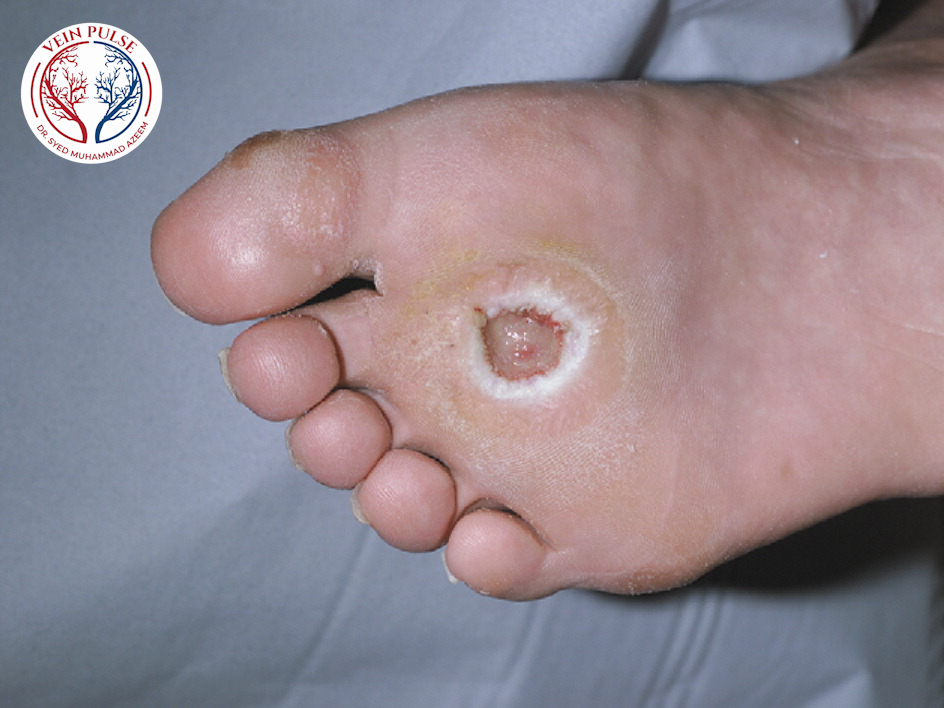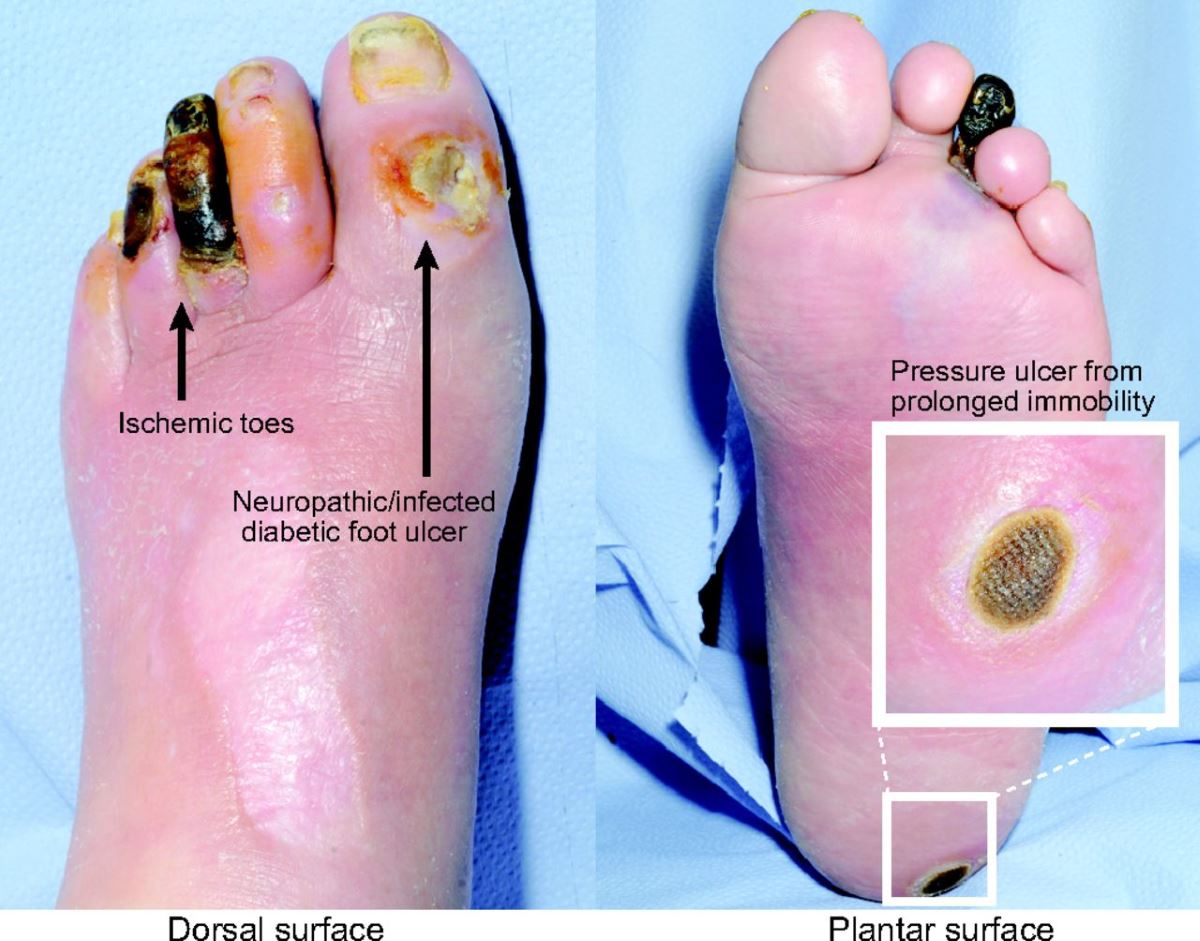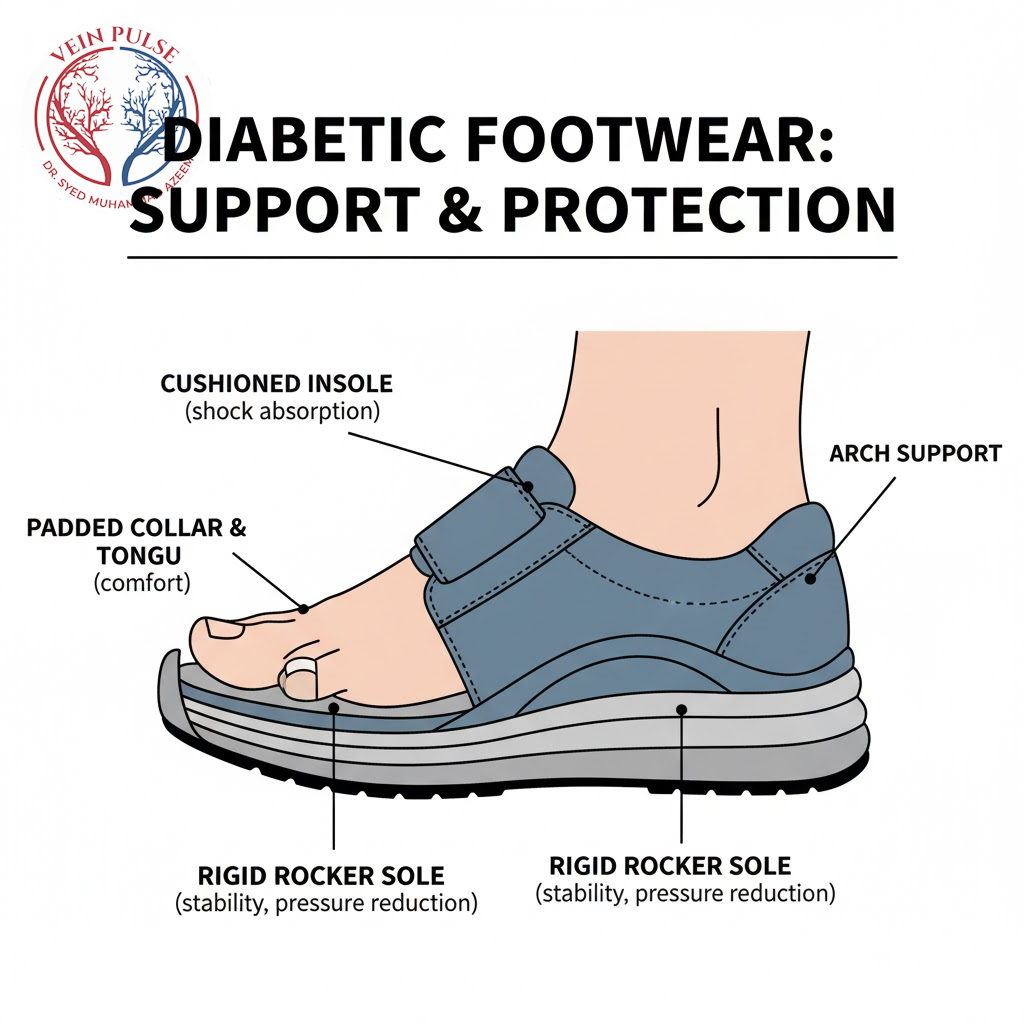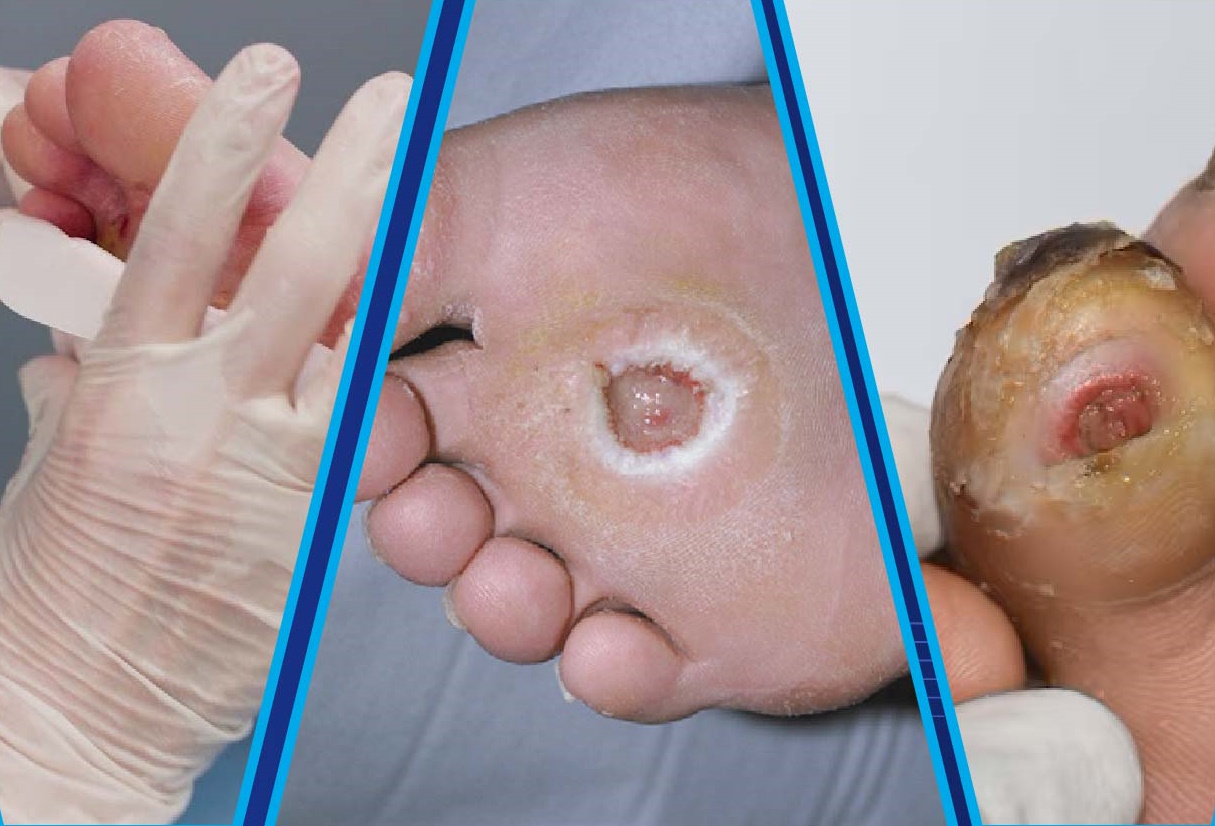Early Warning Signs You Shouldn’t Ignore
Protect your feet, preserve your mobility

CRITICAL FACT

Diabetes affects over 33 million Pakistanis, and foot complications remain one of the most serious yet preventable consequences. High blood sugar damages nerves and blood vessels in your feet, creating a dangerous combination: you lose sensation while circulation worsens. Small problems escalate into major infections without you noticing.
Why Diabetic Feet Are Vulnerable

Diabetes creates two primary foot problems:
Neuropathy (Nerve Damage)
You lose feeling in your feet. Cuts, blisters, or pressure sores go unnoticed. Pain that would normally alert you disappears.
Poor Circulation
Blood flow to your feet decreases. Wounds heal slowly. Infections spread faster. Tissue dies more easily.
Early Warning Signs

1. Numbness or Tingling
Pins-and-needles sensation, burning feeling, or complete loss of sensation in feet or toes. Test: If you can’t feel light touch or temperature changes, nerve damage has begun.
2. Color Changes
Feet turn red, blue, or purple. Pale or black spots appear. These indicate circulation problems or tissue death starting.
3. Temperature Changes
One foot feels significantly colder than the other. This signals poor blood flow to that foot.
4. Skin Changes
Dry, cracked skin on feet. Shiny, tight skin. Thick calluses. Hair loss on feet and toes. These indicate poor circulation and nerve damage.
5. Shape Deformities
Bunions developing or worsening. Hammertoes appearing. Collapsed arches (Charcot foot). These create pressure points where ulcers form.
6. Non-Healing Wounds
Any cut, blister, or sore that doesn’t heal within one week. This is a medical emergency for diabetics.
7. Swelling
Persistent swelling in feet or ankles. One foot more swollen than the other. May indicate infection or circulation problems.
8. Pain or Cramping
Pain in legs or feet when walking that stops with rest (claudication). Night cramps. These signal blocked arteries.
9. Fungal Infections
Persistent athlete’s foot. Thick, discolored toenails. Fungal infections create entry points for bacteria.
10. Drainage or Odor
Pus or fluid draining from feet. Foul smell from feet or socks. These indicate active infection requiring immediate treatment.


Daily Foot Care Protocol
Every Day:
- Inspect feet thoroughly: Check between toes, soles, heels. Use a mirror for bottom of feet. Look for cuts, blisters, redness, swelling, or nail problems.
- Wash feet daily: Use lukewarm water (test with elbow). Mild soap. Dry thoroughly, especially between toes.
- Moisturize: Apply lotion to feet (not between toes). This prevents dangerous cracks in dry skin.
- Check your shoes: Feel inside for foreign objects, rough seams, or torn linings before wearing.

Nail Care:
- Cut nails straight across, not too short
- File sharp edges
- If you have poor vision or thick nails, see a podiatrist
- Never use sharp tools on corns or calluses
Footwear Rules:
- Never walk barefoot – not even at home
- Wear proper shoes with good support and cushioning
- Avoid sandals and open-toed shoes
- Break in new shoes gradually
- Change socks daily – use cotton or moisture-wicking fabric
- No tight socks or elastic bands that restrict circulation


What Not to Do
Prohibited Actions:
- Never use heating pads or hot water bottles on feet
- Don’t soak feet (makes skin vulnerable)
- Never treat corns or calluses yourself
- Don’t use chemical corn removers
- Never walk barefoot – even in bathrooms
- Don’t ignore minor injuries
- Never smoke (worsens circulation dramatically)
Medical Management in Pakistan
Regular Check-ups:
- Annual comprehensive foot exam: Doctor checks sensation, circulation, and structure
- More frequent if you have: Previous foot ulcers, deformities, poor circulation, or loss of sensation
- Immediate visit for: Any wound, infection sign, or change in foot appearance

Available Treatments in Pakistan:
- Diabetic foot treatment Islamabad: Specialized diabetic foot clinics at Shifa International hospital, PIMS, CMH and other major hospitals offer multidisciplinary care
- Foot ulcer care Pakistan: Advanced wound care centers provide debridement, infection management, and specialized dressings
- Vascular surgery: Available in major cities for severe circulation problems
- Podiatry services: Growing availability in urban centers for specialized foot care
Prevention is Your Best Defense
Controlling blood sugar remains the most effective prevention strategy. HbA1c below 7% significantly reduces neuropathy and circulation problems. Regular monitoring and medication adherence protect your feet more than any other intervention.
Blood Sugar Control
Target HbA1c < 7%. Check levels as prescribed. Take medications consistently.
Blood Pressure Management
Keep BP < 140/90. High BP damages blood vessels supplying your feet.
Cholesterol Control
Maintain healthy levels. Cholesterol buildup narrows arteries to feet.
No Smoking
Smoking constricts blood vessels. Dramatically increases amputation risk.
When to Seek Specialist Care
See a diabetic foot specialist if you have:
- Previous foot ulcer or amputation
- Loss of sensation in feet
- Poor circulation (weak pulses, cold feet)
- Foot deformities
- Vision problems preventing self-examination
- Kidney disease (increases infection risk)

Cost-Effective Care in Pakistan
Government hospitals provide diabetic foot care at minimal cost. Teaching hospitals in major cities offer specialized services. Many NGOs run diabetes clinics with subsidized care. Early intervention costs far less than treating advanced complications.
The Reality Check

Every 30 seconds, someone in the world loses a leg to diabetes. In Pakistan, delayed care and limited awareness make these statistics worse. But here’s the critical point: most amputations are preventable.
A small cut ignored today becomes a major infection next week. That infection spreads to bone. Amputation follows. This progression is predictable and preventable.
Your feet don’t send early warnings after nerve damage occurs. You must inspect them daily because your nervous system can’t protect you anymore. This isn’t optional maintenance – it’s survival protocol.
KEY TAKEAWAY
If you have diabetes, you cannot afford to ignore your feet. Daily inspection, proper footwear, and immediate medical attention for any problem form your defense against life-altering complications. The time investment is minutes per day. The alternative is permanent disability.
Take Control of Your Diabetic Foot Health with Vein-Pulse

Living with diabetes in Pakistan requires vigilant foot care, and maintaining proper circulation is crucial for preventing complications. VeinPulse.com offers innovative solutions designed to support healthy blood flow in your lower extremities—a vital concern for diabetic patients who often experience reduced circulation. Poor blood flow can lead to numbness, slow-healing wounds, and serious complications, but with the right tools and guidance, you can take proactive steps toward better foot health. Whether you’re experiencing tingling sensations, cold feet, or simply want to prevent future problems, VeinPulse provides accessible options to complement your diabetic care routine. Ready to learn more about how to protect your feet? Book a personalized consultation with our specialists who understand the unique challenges faced by diabetic patients in Pakistan. Stay connected with our community for daily foot care tips, success stories, and expert advice—follow us on Facebook and Instagram (@veinpulse) to join thousands of others prioritizing their vascular health. Your feet carry you through life; let VeinPulse help you keep them healthy and strong.
https://www.facebook.com/veinpulse/
https://www.instagram.com/drazeemagha?igsh=NGZ1bDF0MDFiM2hw
https://www.tiktok.com/@vascular_surgeon?_t=ZS-90PGiu6TAhB&_r=1
